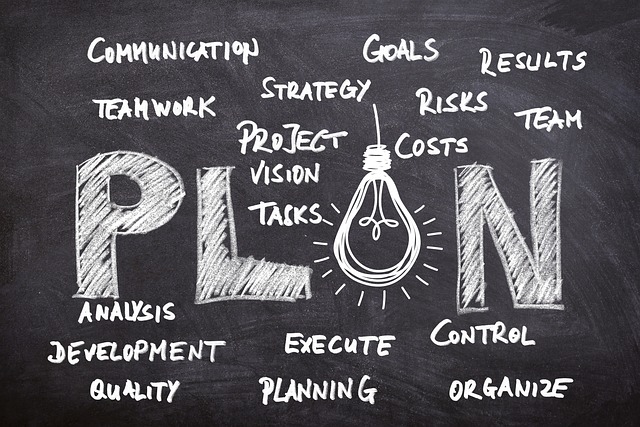Understanding Customer Needs: The Heart of Your Business Strategy
Creating a business strategy that prioritizes customer needs is no longer just an option; it’s essential. In an ever-evolving marketplace, companies that listen to and understand their consumers invariably thrive. But what does it mean to prioritize customer needs effectively? First and foremost, it requires a commitment to developing a customer-centric approach. This entails thoroughly understanding your customers’ wants, pain points, and desires. By emphasizing this understanding in your strategy, you ensure that your business not only meets but exceeds customer expectations.
To begin with, it’s crucial to acknowledge that every customer interaction serves as a piece of feedback. Whether a consumer praises your product or voices a complaint, these insights are invaluable. They’re not just comments; they’re opportunities for growth. For instance, if customers frequently express dissatisfaction with a particular feature, this feedback should guide your strategy moving forward. Embracing a proactive mindset toward customer feedback can lead to innovative changes that align your offerings with market demands.
Additionally, exploring methods to gather customer insights is vital. Surveys, interviews, focus groups, and online reviews provide nuanced understandings of your customer base. Each tool offers a glimpse into customer expectations. By utilizing a combination of these methods, you can create a well-rounded perspective of what your customers truly want. Furthermore, diving into customer personas can enhance this understanding; these fictional representations of your ideal customers capture demographics, behavior patterns, and preferences. This approach allows you to tailor your product offerings closely aligned to the wants and needs of your target audience.
Building a Customer-Centric Culture
Once you have an understanding of customer needs, fostering a customer-centric culture is your next step. This culture emphasizes putting customers at the forefront of every decision your business makes. Every team member, from sales to product development, should grasp the importance of viewing their roles through a customer-focused lens. To achieve this, extensive training and workshops can be instrumental. They offer team members a chance to engage with customer feedback actively and learn how their contributions affect the overall customer experience.
Moreover, it’s essential to establish clear communication channels where employees can share their insights and feedback on customer interactions. This two-way communication not only empowers employees but also contributes to a more engaged workforce. When employees feel their input is valued, they are more likely to contribute positively to the customer experience. A team that genuinely cares about customer needs will drive customer loyalty and, consequently, long-term business success.
In addition to internal culture, external communication with customers plays a significant role. Regular updates about changes and improvements based on customer feedback demonstrate your commitment to putting them first. This transparency builds trust and strengthens the relationship between your brand and your consumers. In essence, cultivating a customer-centric culture propels your business strategy forward, aligning every aspect of your operations with the needs of your customer base.
Designing Customer-Centric Products and Services
Once you have a solid understanding of customer needs, it’s time to move into the design phase of your products and services. Tailoring offerings to align with customer preferences enhances their overall journey with your brand. To initiate this process, involving customers in product development through co-creation can be incredibly beneficial. Engage customers in brainstorming sessions or prototype testing to ensure your offerings resonate with their needs.
While developing services or products, always keep in mind the unique selling proposition (USP). A potent USP not only highlights the distinguishing features of your product but also emphasizes the benefits that matter most to customers. Focus on communicating this aspect effectively through your marketing channels. For instance, if your product saves time, energy, or resources, make this clear in your messaging. When customers see the direct benefits, it solidifies their choices and enhances brand loyalty.
In this context, an iterative design process often proves beneficial. Continuously gather feedback throughout the product lifecycle. After a product launch, don’t shy away from seeking direct feedback from customers. Use this insight for future iterations or to inspire new products that may better meet their needs. This ongoing commitment to refining products and services demonstrates your dedication to prioritizing customer needs, providing them with an ever-improving experience.
Establishing Metrics and KPIs
Measuring how well your business strategy prioritizes customer needs is critical. Establishing metrics and key performance indicators (KPIs) allows you to assess the effectiveness of your customer-centric approach. For instance, customer satisfaction scores (CSAT) and net promoter scores (NPS) serve as essential metrics. They offer insights into how customers perceive your brand and their likelihood to recommend it to others. Regularly tracking these metrics helps identify trends and areas needing improvement.
Moreover, consider the role of churn rates and customer retention figures in your assessment. High churn rates can signal dissatisfaction or unmet needs. By analyzing customer behavior post-purchase, you can identify patterns that inform your strategy. For instance, if many customers disengage after a few months, reassess their journey and identify potential gaps in your offerings. This data-driven approach allows you to pivot your strategy accordingly.
Incorporating customer feedback into these metrics creates a holistic view of your performance. Instead of only relying on quantitative data, qualitative feedback adds depth to your understanding. Surveys and interviews can unveil emotional connections, frustrations, and delights that numbers alone cannot capture. By harmonizing both qualitative and quantitative insights, you can build a comprehensive picture of how well your strategy aligns with customer needs, driving future enhancements.
Marketing and Reputation Management: The Customer-Centric Approach
Marketing plays a pivotal role in exemplifying your customer-centric strategy. When developing marketing campaigns, focus on customer storytelling. This technique shares real experiences and testimonials that resonate with potential customers. Narratives about how your product or service transformed a customer’s life can create emotional connections, effectively bridging the gap between your brand and consumers.
Furthermore, consider employing personalization techniques in your marketing efforts. Tailoring communications based on consumer preferences fosters a welcoming experience. For instance, targeted email campaigns featuring product recommendations based on previous purchases show customers you genuinely understand their needs. This tailored approach increases engagement, boosts conversion rates, and reflects your commitment to prioritizing customer needs.
Lastly, managing your online reputation involves responding promptly to customer inquiries and concerns. Addressing issues transparently fortifies trust and demonstrates your commitment to resolving customer problems. Encourage customer reviews and ratings, and showcase positive testimonials across your platforms. This practice not only affirms your dedication to customer satisfaction but serves as social proof that attracts new customers.
Adapting to Changing Customer Needs
In the dynamic world of business, the ability to adapt to changing customer needs remains paramount. Consumer preferences and behaviors can shift rapidly, influenced by societal trends, economic changes, and technological advancements. To remain relevant, consistently revisit the insights gathered from your customer interactions and market analysis. Continuous learning about your customers enables your brand to anticipate shifts and respond proactively.
Implementing agile methodologies can support this adaptability. Agile practices emphasize flexibility and rapid response to change. By working in iterative cycles, your team can adapt strategies based on real-time feedback. This practice not only accelerates your capacity to innovate but also ensures your offerings stay aligned with customer needs. An agile approach enables your business to pivot and adjust course, ensuring you’re persistently on track to meet consumer demands.
Additionally, staying informed about industry trends is vital. Subscribe to industry reports, engage with thought leaders, and participate in relevant seminars or webinars. These educational practices not only empower your team but also equip you with insights that aid strategic decision-making. Remember, the landscape in which you operate is fluid. Keeping abreast of these changes enables your business to respond effectively and maintain a strong customer focus.
Commitment to Continuous Improvement
Prioritizing customer needs is not a one-time exercise. It necessitates a continual commitment to improvement and adaptation. By analyzing collected data, engaging with customers, and launching new initiatives, your business establishes an ecosystem where customer feedback fuels growth. Regularly evaluate your strategies and adjust as necessary, ensuring you remain attuned to the evolving marketplace.
Continuous improvement can include refining communication strategies, enhancing product features, or even revamping customer service protocols. An ongoing assessment of these elements ensures your business remains aligned with customer expectations. This commitment strengthens your reputation and contributes to a solid relationship with your consumers.
To foster a culture of continuous improvement among your team, integrate feedback loops into your processes. Encourage open communication and idea sharing throughout your organization. Empower employees to take initiative and contribute ideas that enhance customer engagement. When everyone feels involved in the journey to meet customer needs, the overall experience improves. Ultimately, cultivating a mindset of continuous improvement becomes both a driving force and a key pillar of your customer-centric business strategy, leading to sustainable success in the long run.
FAQ
What does it mean to prioritize customer needs?
Prioritizing customer needs means putting the wants, expectations, and feedback of customers at the forefront of business decisions. This approach ensures products, services, and customer interactions align with what customers truly value, enhancing satisfaction and loyalty.
How can a business create a strategy that is customer-centric?
A business can create a customer-centric strategy by gathering detailed customer insights through surveys, focus groups, and feedback loops. Establishing a culture that values customer input, designing products around customer preferences, and measuring success through customer satisfaction metrics are also essential steps.
What are some effective ways to gather customer feedback?
Effective methods for gathering customer feedback include conducting surveys, facilitating interviews, hosting focus groups, and monitoring online reviews. Engaging in social media conversations also provides valuable insights directly from your customers.
How does a customer-centric approach benefit a business?
A customer-centric approach fosters stronger relationships with consumers, leading to increased loyalty, repeat purchases, and referrals. It often results in improved product development, reduced churn rates, and greater customer satisfaction, ultimately elevating the business’s overall performance.
What are some common metrics to assess customer satisfaction?
Common metrics used to assess customer satisfaction include the Customer Satisfaction Score (CSAT), Net Promoter Score (NPS), Customer Effort Score (CES), churn rates, and retention rates. These metrics provide insights into consumer perception and satisfaction levels relative to your products and services.



